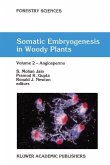Tree improvement is necessary to meet the growing demand for the renewable resource wood. Many novel possibilities to obtain improved species are offered by biotechnology, and the time is ripe for a critical evaluation of the chances and challenges of tree transgenesis. Sixteen chapters by experts in the field provide concise information on the present state of the following topics: transgenic trees in the world; environmental aspects of lignin-modified trees; modification of cellulose in wood; heavy metal resistance and phytoremediation with transgenic trees; transgenic approaches to engineer nitrogen metabolism; disease resistance; drought tolerance. In addition, biosafety and risk assessment are treated in detail, and future experimental tasks are discussed. The book provides a sound basis for decision-making processes in politics.
A continuous development in plant biotechnology including gene technology has been observable during the past 20 years. Different methods elaborated with model plants were also applied to forest trees on a larger scale. Whereas in the beginning the meaning of the term "plant biotechnology" embraced a wide variety of meanings like, e. g. , regeneration of plantlets via tissue culture, embryo rescue, somatic embryogenesis and gene transfer, the focus of this term has changed more and more. Nowadays, it is the transfer of genes which comes into mind when plant biotechnology is discussed, including of course the evaluation of all challenges and risks related to gene transfer methods. Compared with annual plants, especially in the field of agriculture, the work and the progress with transgenic trees is still in its infancy. Nevertheless, but often unnoticed by the scientific community, there are a few countries which already allow the commercial use of a restricted number of transgenic tree clones after different critical steps of approval. This and the ongoing improvement in transgenic research in trees led to the idea of preparing a summary of the present state of the art from different points of view. With the help of a number of authors directly or indirectly involved in tree transgenesis, this book was produced.
A continuous development in plant biotechnology including gene technology has been observable during the past 20 years. Different methods elaborated with model plants were also applied to forest trees on a larger scale. Whereas in the beginning the meaning of the term "plant biotechnology" embraced a wide variety of meanings like, e. g. , regeneration of plantlets via tissue culture, embryo rescue, somatic embryogenesis and gene transfer, the focus of this term has changed more and more. Nowadays, it is the transfer of genes which comes into mind when plant biotechnology is discussed, including of course the evaluation of all challenges and risks related to gene transfer methods. Compared with annual plants, especially in the field of agriculture, the work and the progress with transgenic trees is still in its infancy. Nevertheless, but often unnoticed by the scientific community, there are a few countries which already allow the commercial use of a restricted number of transgenic tree clones after different critical steps of approval. This and the ongoing improvement in transgenic research in trees led to the idea of preparing a summary of the present state of the art from different points of view. With the help of a number of authors directly or indirectly involved in tree transgenesis, this book was produced.








